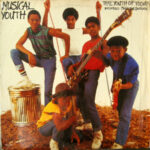 The 1980s gave birth to a broad spectrum of pop stars and one-hit wonders, each trying to carve out a unique niche in a competitive and constantly evolving musical landscape. Amidst the glam, glitter, and synth-pop, one artist stood out for his distinct yet highly manufactured persona: Taco. Known for his cover of the Irving Berlin classic “Puttin’ On the Ritz,” Taco managed to capture a moment in pop history, but his career has been marked by accusations of being a musical poser—someone who was far more about image than substance. In this article, we will take a closer look at Taco’s career and examine whether the title of “biggest musical poser” is a fair one.
The 1980s gave birth to a broad spectrum of pop stars and one-hit wonders, each trying to carve out a unique niche in a competitive and constantly evolving musical landscape. Amidst the glam, glitter, and synth-pop, one artist stood out for his distinct yet highly manufactured persona: Taco. Known for his cover of the Irving Berlin classic “Puttin’ On the Ritz,” Taco managed to capture a moment in pop history, but his career has been marked by accusations of being a musical poser—someone who was far more about image than substance. In this article, we will take a closer look at Taco’s career and examine whether the title of “biggest musical poser” is a fair one.
1. Who Is Taco? A Brief Overview of His Career
Taco Ockerse, better known by his stage name Taco, was born in 1955 in Indonesia and raised in the Netherlands. Taco became a part of the 1980s new wave and synth-pop scene, but it wasn’t until the release of his cover of “Puttin’ On the Ritz” in 1982 that he achieved international recognition. The track, an updated version of the 1927 Irving Berlin standard, was an attempt to bridge the gap between classic Hollywood glamour and the emerging pop sounds of the 1980s. Taco’s version was characterized by lush synths, an almost cabaret-style vocal performance, and a heavily stylized music video that capitalized on the burgeoning MTV era.
While his rendition of “Puttin’ On the Ritz” became a modest hit in several countries, the song’s success overshadowed much of the substance behind Taco’s persona. At its core, Taco’s music was a carefully constructed image, a reflection of the flashy, glamorous, and superficial side of the 1980s, which was known for its obsession with appearances and style over substance. But as Taco’s career progressed, it became clear that image and style often took precedence over true artistic innovation or musical depth.
2. The Rise of Taco’s Pop Image: Flashy, Faux-Exotic, and Superficial
When Taco first emerged on the scene, he seemed to be a product of the era’s obsession with glamour and stylized sophistication. “Puttin’ On the Ritz,” his biggest hit, combined a luxurious sense of nostalgia with the flamboyance of 1980s pop culture, creating a song that felt both old-fashioned and modern, yet oddly hollow. The music video, in particular, showcased Taco as a sort of dapper, suave entertainer dressed in immaculate suits, often framed against extravagant, European-style settings.
But the image Taco presented was artificial at best. His exotic background (being Indonesian and Dutch) was never really explored or highlighted in his music or persona. Instead, Taco seemed to perform as a generic Euro-pop star whose visual aesthetic and presentation took center stage. He wasn’t so much a cultural figure as he was a fashion statement, an embodiment of the type of faux-elegance and surface-level appeal that defined the 1980s.
Taco’s persona lacked the authenticity that many of his contemporaries boasted. While other artists of the 1980s, like David Bowie or Prince, used their image to reflect their artistic vision and depth, Taco’s carefully crafted visual presence felt more like a costume than an extension of his artistic self. It was as though Taco was playing a role—one that had been designed to sell records, rather than to convey a meaningful message or vision. The styling and attitude seemed far more important than the actual music.
3. The Facade of “Puttin’ On the Ritz”
The cover of “Puttin’ On the Ritz” stands as a prime example of Taco’s tendency to prioritize image over substance. In this case, Taco chose to cover a song that had long been associated with the classic Hollywood era and was performed by legendary artists like Fred Astaire and Bing Crosby. Taco’s version, with its synthesizer-heavy production and slick, smooth vocals, was far more of a reinterpretation than a true reinvention. While it was undoubtedly a catchy, radio-friendly track, it was also emblematic of Taco’s approach to music: he was performing a version of sophistication—not creating something that was inherently fresh or new.
The track’s success, largely based on its catchy chorus and visual appeal (the music video featured Taco dressed in posh suits and performing in a highly stylized, “elite” world), raised the question: was Taco really making important music, or was he just another cog in the machine of 80s commercial pop? His image—seamlessly combining old Hollywood glamour with modern synth-pop trends—was masterfully executed, but it also felt hollow. Taco was selling an image, not an authentic experience. His fans weren’t buying into his music as much as they were buying into the aesthetic of the 1980s, the escapist allure that seemed to promise more than it delivered.
4. The Art of the “Poser”: Analyzing Taco’s Musical Approach
The concept of the “poser” in music has always been linked to the idea of style over substance—the notion that an artist is more about creating a visual or lifestyle brand than about producing music with depth. In Taco’s case, the term “poser” comes into play not because of a lack of talent, but because of his apparent disinterest in deeper artistic exploration. Taco’s music didn’t seem to represent a personal vision or musical evolution; it seemed designed to fit into a mold—one that was pre-packaged for commercial success.
While Taco was undeniably a competent performer and a skilled vocalist, his contributions to the pop music landscape often felt safe and commercially calculated. His career lacked the bold, innovative spark of other 80s stars, and his musical decisions often leaned more toward trend-following than trend-setting. Taco was never an artist who pushed boundaries or challenged conventions—he was more content to ride the wave of pop culture’s whims, tailoring his image and music to fit whatever was popular at the time.
Moreover, Taco’s shallow grasp of musical themes and over-reliance on style only added to his poser reputation. His music rarely ventured beyond the surface level. His album releases, after the success of “Puttin’ On the Ritz,” never really offered anything of note. They were a mix of unremarkable tracks that seemed like placeholders rather than genuine artistic expression. His one-hit wonder status reflected the fleeting nature of his impact—once the glamour faded, there was little left to sustain his popularity.
5. The Decline of Taco’s Career: Style Without Substance
In the years following his brief moment of fame, Taco’s career began to wane. While he still maintained a presence in the music industry, it became clear that his musical approach was more of a fad than a sustainable formula. Taco, having relied on his image rather than developing any real musical depth, found himself unable to keep up with the changing tastes of the music world. His music was too stuck in the past—too tied to the aesthetic of the early 80s to remain relevant in the ever-evolving pop landscape.
The failure to evolve musically and the lack of a distinct, unique voice outside of his image ultimately left Taco in the dustbin of pop history. His attempts at reinvention—whether through new songs or changes in appearance—were never enough to break free from the shadow of his initial image. Taco had become a product of the era, and when that era passed, so did his career.
6. Conclusion: Taco as the Ultimate “Poser”
Taco’s career may be one of the most fascinating examples of musical posing in pop music history. While he had the talent, he never fully committed to the kind of authentic artistic journey that defines the greats. His reliance on image over substance, his calculated persona, and his fixation on external appearance rather than musical depth make Taco a prime example of the musical poser—someone who was more interested in performing an image than in creating lasting, meaningful music.
In the end, Taco may not have been the worst musician of the 1980s, but he was certainly one of the most superficial. His career is a testament to the dangers of selling an image over cultivating true artistry. In a world of musicians who were pushing the boundaries of sound, Taco chose instead to put on the glitz and glamour—a choice that ultimately led him to become a footnote in pop music history, remembered more for his persona than his musical contributions.
This post has already been read 84 times!









